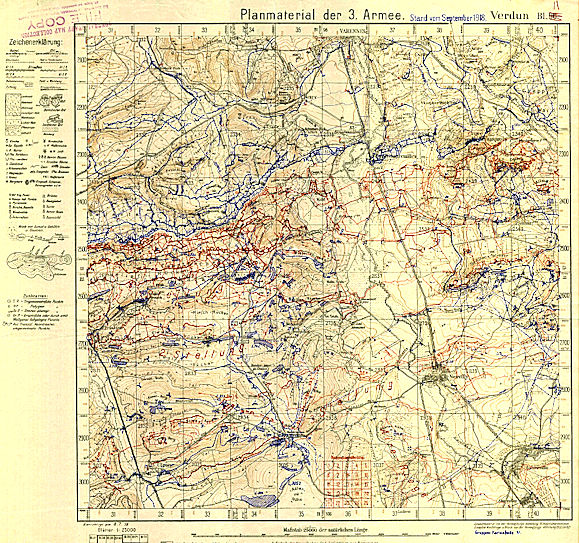 |
| A Valuable Document for the Enemy British Trench Map for the Somme Sector |
By Terrence J. Finnegan
Captured documents such as maps, aerial photography and written orders were ideal intelligence sources. Sometimes sketches contained within such documents included notes regarding machine guns, Minenwerfer (trench mortars), dummy complexes, and other projects of interest. Captured documents were forwarded to the photographic interpreter for in-depth examination. His initial tactical approach attempted to unlock the key to enemy intentions. This was followed by a broader strategic analysis accomplished by the staff.
 |
| A Valuable Document for the Enemy German Intelligence Summary, Argonne Sector, Sept. 1918 |
The interpreter's art required a perfect knowledge of the details of the trench organization, such as that found in the published regulations. French instructional manuals reminded their readers that the commander's responsibilities included reviewing captured documents to provide for every possible phase of attack, studying for successive lines of defense and all enemy lines of approach.
Knowing enemy intentions intimately from these sources best positioned the defense to counterattack and eject the enemy rapidly from any captured territory. Based on captured documents, General Ludendorff adjusted his directives to the forces in final preparation for the March 1918 Michael Offensive in the Somme Sector.
From "Military Intelligence at the Front," Over the Top, February 2009

The mapmakers art of the time must be of high quality to provide so much detail. It would seem to me that aerial recon would also be a big part of confirming intel.
ReplyDelete